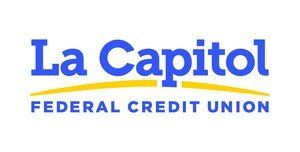IRA Contribution Limits: What You Should Know
From your Member Benefit - LaCapitol Federal Credit Union

As the holidays end, Americans begin gearing up for tax season. This time of the year is essentially the eleventh hour to double check your finances so that everything will be in order for your 2024 tax filing.1 Individual retirement accounts, IRAs,2 should be included in that preparation. You’ll want to ensure that you’ve maxed out your contribution, consider catchup contributions if you haven’t, and align your finances to take advantage of the new adjusted IRA contribution limits for next year. Consult your tax professional to see what specific tax advantages apply to your situation.
What are Individual Retirement Accounts?
IRAs are savings accounts that let you save money for retirement and earn interest on it but offer some tax advantages that other savings accounts don’t. La Cap offers several IRA products that fall into the two categories: traditional IRAs and Roth IRAs. You can also view our current rates.
La Cap IRA products (available as Roth and Traditional) include:
• Certificate Accounts3
• Floating Rate Account4
• Bonus IRA Account2
The most basic difference between the two is that with traditional IRAs, the money you save isn’t taxed until you withdraw it while Roth IRA contributions are funded with post-tax money, but qualified withdrawals are tax-free. Because these savings accounts have tax implications for account holders, they’re bound by annual IRA contribution limits that change each year as well as income and age guidelines.
2023 IRA Contribution Limits for Tax Season 2024
It is important to realize that even though you can have more than one IRA account — both a traditional IRA and a Roth IRA, for example — contribution limits are assigned to each individual. The annual contribution limit is an overall figure that applies to the total of all of your IRA accounts together, not each one.
For 2023, the contribution limit is $6,500 for individuals under 50. For individuals 50 or older, the contribution limit is $7,500. The limit for older individuals is $1,000 higher because it allows people who are closer to retirement to make catchup contributions that they probably couldn’t afford when they were younger. Catchup contributions can also help build a cushion against steadily rising living costs.
If you’re thinking that you don’t have time to come up with funds for a catchup contribution, the good news is that you have until Tax Day, April 15, 2024, to make a deposit that can count toward your 2023 IRA. Determining exactly how much you can contribute versus how much you might want to contribute depends on your income and the type of IRA. So, how much can you put in an IRA?
How Income Affects IRA Contribution Limits for 2023
For traditional IRAs, you’re allowed to contribute the full amount up to the contribution limit regardless of your income. However, Roth IRAs control how much you can save by tracking contribution limits with your modified adjusted gross income, also referred to as MAGI.
- If you file as single, head of household or married filing separately, as long as your MAGI is less than $138,000, you can contribute the full amount. However, if your MAGI is $138,000 or more and less than $153,000, your contribution limit is reduced. If your MAGI is $153,000 or more, no contribution is allowed.
- If you file as married filing jointly or as a widow/widower, as long as your MAGI is less than $218,000, you can contribute the full amount. However, if your MAGI is $218,000 or more and less than $228,000, your contribution limit is reduced. If your MAGI is $228,000 or more, no contribution is allowed.
- If you file as married filing separately and lived with your spouse at any time during the year, as long as your MAGI is less than $10,000, you can contribute, but the limit will be reduced. If your MAGI is $10,000 or more, no contribution is allowed.
As a general rule, you cannot contribute more to an IRA than you earn or, if you’re married, your spouse’s earnings will cover.
How Tax Deductions Affect IRA Contribution Limits
While your earnings don’t affect whether you can contribute to a traditional IRA, your MAGI does affect whether you’ll be able to deduct the contributions you make to a traditional IRA from your taxes. Note that only traditional IRAs are eligible for deductions. Roth IRAs are not.
Deduction qualification tables for traditional IRAs assume that you, or your spouse, are covered by a retirement plan through your employer. If you aren’t, the tax deduction limits don’t apply, and you can deduct your entire contribution.
- If you file as single or head of household, as long as your MAGI is $73,000 or less, you’re eligible for the full deduction. If your MAGI is more than $73,000 and less than $83,000, you’re eligible for a partial deduction. If your MAGI is $83,000 or more, you’re ineligible for a deduction.
- If you file as married filing jointly and you are covered by your employer’s retirement plan, as long as your MAGI is $116,00 or less, you’re eligible for the full deduction. If your MAGI is more than $116,000 and less than $136,000, you’re eligible for a partial deduction. If your MAGI is $136,000 or more, you’re ineligible for a deduction.
- If you file as married filing jointly and your spouse is covered by their employer’s retirement plan, as long as your MAGI is $218,000 or less, you’re eligible for the full deduction. If your MAGI is more than $218,000 and less than $228,000, you’re eligible for a partial deduction. If your MAGI is more than $228,000, you’re ineligible for a deduction.
- If you file as married filing separately, as long as your MAGI is less than $10,000, you’re eligible for the full deduction. If your MAGI is $10,000 or more, you’re ineligible for a deduction.
IRA Contribution Limit Increases for 2024 and the 2025 Tax Season
Each year, the Internal Revenue Service adjusts limits for IRA contributions, typically raising both the contribution limits and the MAGI guidelines. For 2024, the IRS is raising the annual contribution limits by $500. If you’re under 50, you’ll be able to save up to $7,000, and if you’ll be 50 or older, you’ll be able to save up to $8,000.
Note that the IRS also updates and raises the MAGI thresholds for both Roth IRA contributions and traditional IRA tax deductions. For example, in 2024, all figures increase.
- If you file your taxes as single or head of household, your MAGI must be less than $146,000 to make a full contribution to a Roth IRA. That’s $8,000 more than 2023’s figure.
- If you file your taxes as married filing jointly, your MAGI must be less than $230,000 to make a full contribution to a Roth IRA. That’s $12,000 more than 2023’s figure.
- If you file your taxes as single or head of household, your MAGI must be $77,000 or less to get the full tax deduction on a traditional IRA. That’s $4,000 more than 2023’s figure.
- If you file your taxes as married filing jointly, your MAGI must be $123,000 or less to claim the full tax deduction on a traditional IRA. That’s $7,000 more than 2023’s figure.
The end of the year and start of the new year are busy seasons, but devoting time and attention to your savings now promises the gift of future financial security and independence. If you want to know more about investing in a Roth or traditional IRA, call our Member Services Line at 800.522.2748 or 225.342.5055 to be directed to our savings and investment officers. We offer competitive interest rates that can help you invest wisely. Check out our website, and see why being a member of a nonprofit credit union like La Capitol makes finding the best IRA account so much easier.
Disclosures
1 Consult your tax professional to see what specific tax advantages apply to your situation.
2 APY = Annual Percentage Yield. Bonus IRA is a term share account. La Cap may change the dividend rate for your account as determined by the credit union Board of Directors. The APY is available on new contributions made to your account this year. The maturity date is December 31 of the year the contribution was made. No minimum balance is required to open a Bonus IRA account or to obtain the disclosed APY. IRA transfers or rollovers from another financial institution or retirement plan do not qualify for this special Bonus IRA rate. Dividends earned are posted and compounded monthly. Applicable fees and conditions could reduce the earnings on your account. Substantial penalties for early withdrawal.
3 APY = Annual Percentage Yield. IRA Certificate Account is a term share account. The Annual Percentage Yield is fixed at the time you make the initial deposit to open or renew the account, and will not change during the term of the Certificate.
Dividends earned are posted and compounded monthly. Applicable fees and conditions could reduce the earnings on your account. Substantial penalties for early withdrawal.
4 APY = Annual Percentage Yield. IRA Floating Rate Account is a variable rate account with no maturity. No minimum deposit is required to open this account or to obtain the disclosed Annual Percentage Yield. La Cap may change the dividend rate for your account as determined by the credit union Board of Directors.
Dividends earned are posted and compounded monthly. Applicable fees and conditions could reduce the earnings on your account. Substantial penalties for early withdrawal.





